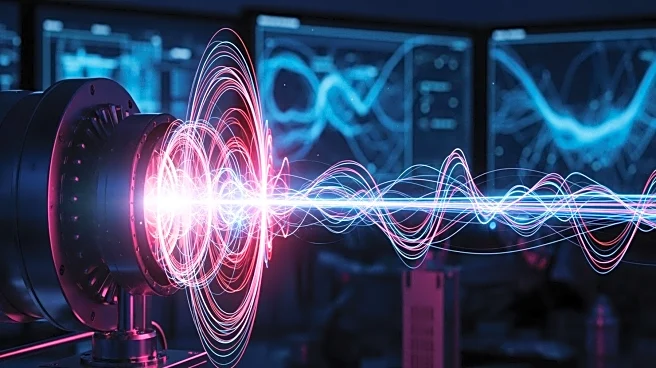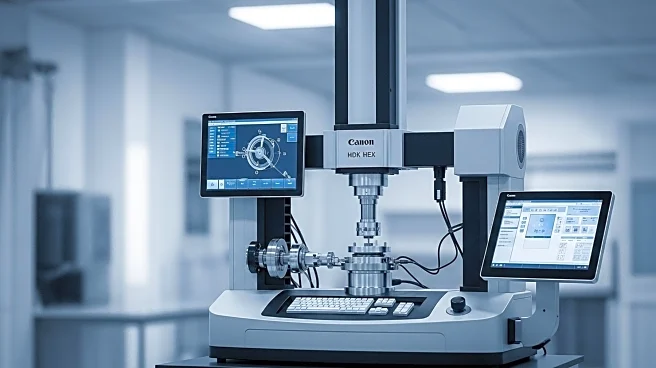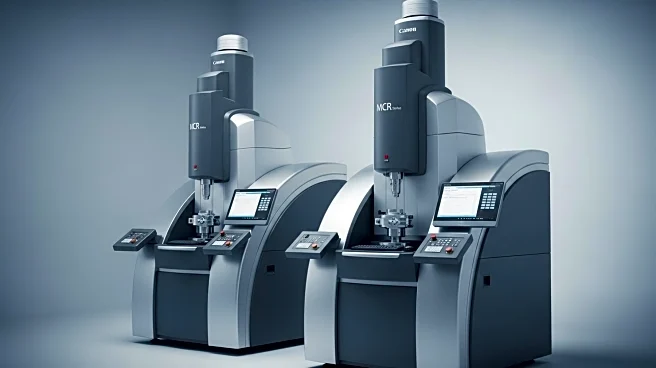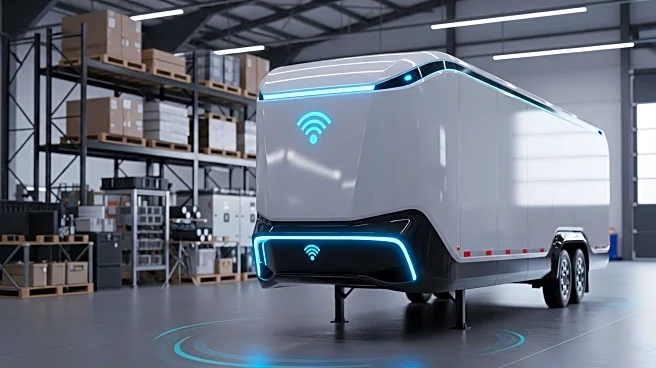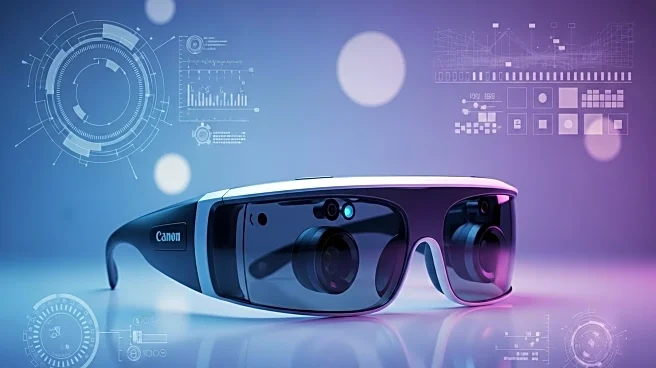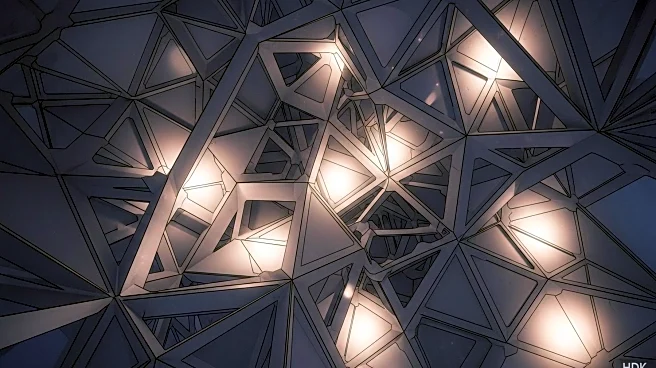What's Happening?
Researchers at Berkeley Lab have developed a compact laser-plasma accelerator (LPA) capable of generating highly directional muon beams. This device, measuring just 30 cm in length, uses intense laser pulses
to accelerate electron beams, which then produce muons when colliding with high-Z targets like lead. The innovation offers a powerful alternative for non-destructive imaging of large or concealed objects, overcoming the limitations of conventional muon sources that are bulky and expensive. The LPA significantly increases muon yields, reducing exposure times from months to minutes, as detailed in a study published in Physical Review Accelerators and Beams. Muons, unlike X-rays, lose energy gradually, allowing them to penetrate dense materials, making them useful for imaging applications such as probing the interiors of volcanoes and inspecting nuclear waste.
Why It's Important?
The development of this compact LPA is significant as it provides a practical solution for generating muons on demand, which can revolutionize imaging applications across various fields. By offering a portable and efficient muon source, the technology could enhance the ability to inspect and analyze structures that are otherwise inaccessible or require lengthy exposure times. This advancement could benefit industries involved in construction, archaeology, and nuclear safety, among others, by providing faster and more accurate imaging capabilities. The ability to generate muons in higher quantities and with greater directionality could lead to improved resolution and speed in imaging processes, potentially reducing costs and increasing efficiency.
What's Next?
The successful demonstration of the LPA-generated muon beams paves the way for future applications that could leverage high-energy beams and detectors optimized for muon scattering image reconstruction. Researchers may focus on refining the technology to enhance its capabilities and explore new applications in various sectors. The development could also prompt further studies into optimizing the LPA for different imaging scenarios, potentially leading to widespread adoption in industries that require detailed structural analysis. As the technology matures, it may attract interest from commercial entities looking to integrate advanced imaging solutions into their operations.
Beyond the Headlines
The ethical and cultural implications of this technology could be profound, particularly in fields like archaeology, where non-invasive imaging can preserve historical sites while providing detailed insights. Additionally, the ability to inspect nuclear waste safely and efficiently could have significant environmental and safety benefits, potentially influencing policy decisions regarding nuclear material management. The long-term impact of this technology may also include shifts in how industries approach structural analysis and imaging, with a move towards more sustainable and efficient methods.
